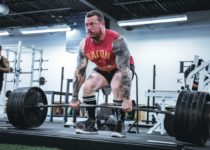The Ultimate Calisthenics Workout Plan
When it comes to building functional strength while developing good looking physique, calisthenics is one of the best methods. With its broad range of movements requiring very little equipment, it is a fun way to train, and for many people more attractive than lifting weights.
But even though Calisthenics doesn't require a gym or fancy equipment, you should have a training schedule if you want to progress steadily.
So whether you're keen to start calisthenics or already more advanced, you should have a structured approach in most of your training.
In this article, you are going to find three different ten-week workout plans from beginners to advanced. Besides that, you'll get all the knowledge you need to design & structure a calisthenics workout plan yourself.
So don't be scared to go through the entire theory section if you want to have the knowledge on how to adjust the schedules, so they perfectly suit you.
I've also included a section where you will learn how to work on advanced elements (frontlever, backlever, planche) on the side, without getting lost in the process!
Prepare your brain to go through a lot of information, and if you feel like going straight to the workout plans, just click this link.
Theory & Science
In this section, you are going to learn everything you need to know on how to build your workout plan and gain an in-depth understanding of why the workout plans look the way they look.
Besides that, there are going to be ideas & tips on how to make your training more interesting while balancing the concept of strictness & freedom.
Muscle Groups
One of the most important aspects when creating a workout plan are muscle groups. You will find a list of all the exercises that you need for each muscle group, while the exercises are sorted from easiest to hardest.
Within Calisthenics we tend to divide each training into four types of exercises which are;
Push
As the name suggests, one of the essential push-exercises are push-ups. Overall any movement where you push against any resistance by using your arms (the floor, weights, etc.) belongs to this category. The primary muscle groups worked are your Triceps, Chest & Shoulders, although many of the exercises will have elements of core strength.
List Of Push Exercises:
- Bench Triceps Dips
- Push-ups Hands Elevated
- Push-ups
- Push-ups Feet Elevated
- Wide Grip Push-ups
- Diamond Grip Push-ups
- Leaning Push-ups
- Triceps Extensions
- Archer Push-ups
- One Arm Push-ups
- Handstand Push-ups
- Dips
- Straight Bar Dips
- Ring Dips
- Wide Grip Ring Dips

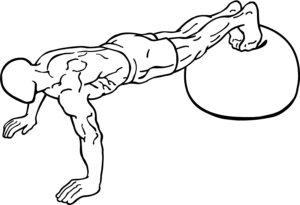
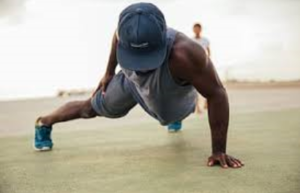



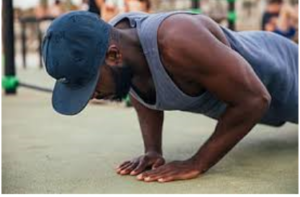

Pull
Pull exercises involve pulling yourself up or pulling something down, whereas the pull-up is by far the most well-known pull exercise. Pull exercises primarily work on your biceps, upper & lower back, but also on your forearms, core strength & shoulders.
List of Pull Exercises
- Rows with legs bent
- Rows/Australian Pull-ups
- Rows with feet elevated
- Rows in chin-up grip
- One arm rows
- Pull-ups
- Wide Grip Pull-up
- Chin-up
- Ring chin-up
- One arm pull-up
- Skin the Cat
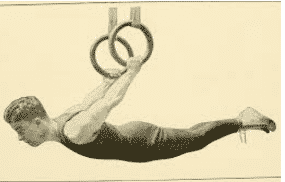
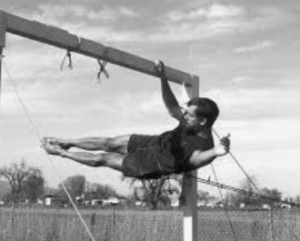
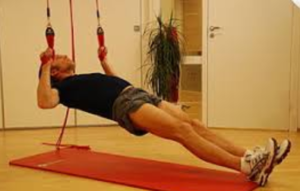


Legs
Any type of squats, calf raises, or hip flexor exercises belong to this category.
List of Leg Exercises
- Squats
- Lunges
- Side Lunges
- Bulgarian Split Lunges
- Box Jumps
- Side Jumps
- Assisted Pistol Squat
- Pistol Squat
- Calf Raise
- Single Leg Calf Raise
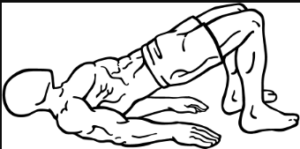

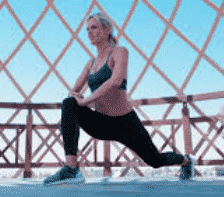
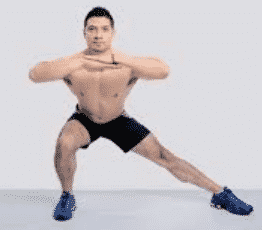

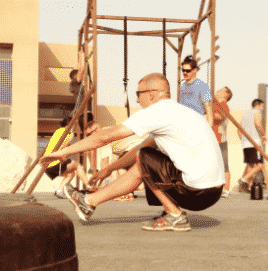
Core
Last but not least, we have core strength, which is a vital aspect of calisthenics. Lower back & ab exercises belong to this category. An exciting point of calisthenics is that you develop a lot of core strength without directly working on it since, most push & pull exercises already train your stabilizing muscles!
List of Core Exercises
- Sit-ups
- Plank
- Side Crunches
- Arch-ups
- Russian Twists
- Tucked V-up
- Jackknives
- Hanging Leg Raise (Bent/Straight Legs)
- Back Extensions
- Dragon Flag
- Human Flag
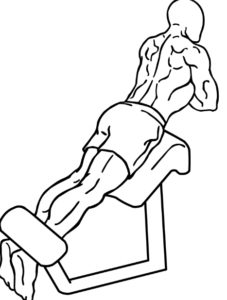

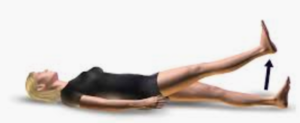



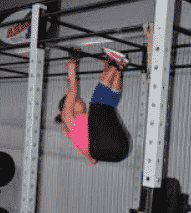
Note:
Don't worry if you don't know all the exercises, they are all well known & can be found by looking for them online! But there are going to be a more detailed explanation of the exercises involved in the workouts!
Equipment (That You Already Have!)
If you've been wondering what equipment you need for calisthenics here you are goign to find a list of some of the most useful pieces of equipment. You'll probably own most of them already, while the other ones are available for very little money!
- Chairs
Chairs are an excellent tool to do bench triceps dips, and regular dips.

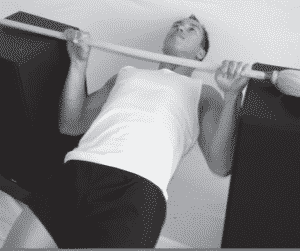
- Broomstick
Place a broomstick on top of two chairs and you can do Rows or Australian Pull-ups anywhere!
- Stable Door
If you have a very stable door in your house you can place a towel on top of it and perform regular pull-ups holding onto the door.
You can also wrap a twoel around the doorhandle to perform let me in's.

- Stable Table
Lay under a table and grip the edge with both hands, so you can perform rows/australian pull-ups.
- Towel
Take a long towel and grab it at one end with each hand. Then put one leg into the loop, perform biceps curls whereas your leg presses the towel down while your arms are pulling it up.
The more you use your legs, the harder the exercise gets.


- Backpack
Take waterbottles/books a sandbag and put it inside the backpack. Now perform any exercise such as squats, pull-ups/dips/push-ups/Back extensions with the backpack to make nearly any exercise harder
- Door Pull-up bar
If you want to invest 10-30$ you might want to consider getting a door pull-up bar.


- Rings
If you have slightly more experience with strength training the rings are by far the best piece of equipment on the planet that you can get for quite little money.
Find a tree/bar to hang the rings in; with rings you can do pull-ups/push-ups/dips/rows and even more advanced exercise. So if you have some experience with Calisthenics but don't have gyms/parks nearby you should get gymnastics rings!
- Parallettes
Are you interested in learning the planche & handstands, but tend to get pain at your wrists often? Then you should invest or build parallettes yourself. It is a lot less impact on your wirsts and some people might find it easier to balance using parallettes.
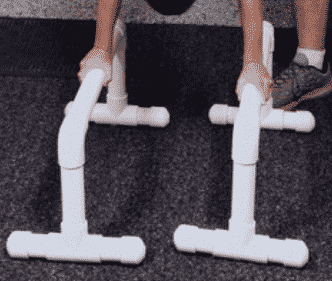
How Often Should You Train? Supercompensation:
Another frequent question that a lot of workout articles do not cover is how often you should train. It is crucial to ask this question as it is one of the determining factors regarding the speed that you progress!
To understand how often you should train, I advise you to take a brief look into a concept called supercompensation.
Looking at the diagram, you have two axes while one represents time & the other one stands for your physical performance. There are four different phases.
- You Train - Strength Level Drops
- Recovery - Strength Level Starts To Recover
- Supercompensation - Your Body Gets Stronger Than Before
- Your Body Starts Getting Weaker Again
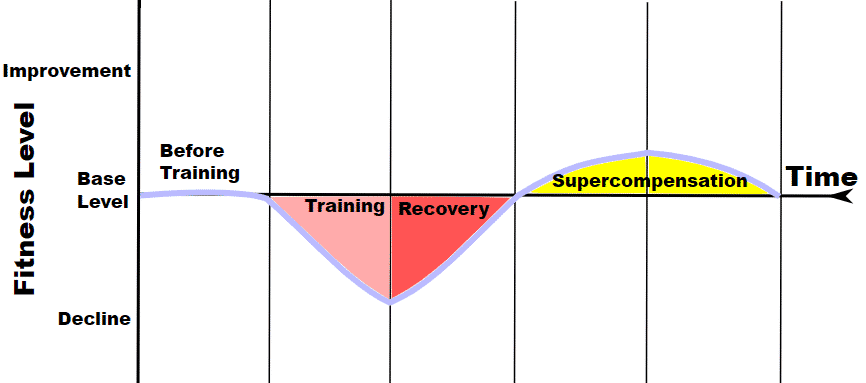
How Does This Help?
If you always set a new stimulus (train) right when supercompensation finishes, you are going to increase your strength.
When overtraining, you would perform a session in the recovery period, which leads to a decrease in strength.
If you don't train often enough, you will set the new stimulus at stage four, which leads to stagnation!
So How Long?
As you've noticed, I still didn't cover when your body reaches supercompensation. The problem is that each human has a different speed in recovery. Furthermore, a beginner should train less often than an advanced athlete as his/her body hasn't adapted yet.
But as a guideline, you should rest the muscle group that you've trained previously for 48-72 hours as a beginner. If you're advanced, on the other hand, resting 24-48 hours is going to be the better option.
It still doesn't mean that you can't train every day if you want to! If you would train, Push on Monday, then pull on Tuesday & Push again on Wednesday, you would still have 48 hours between each push-workout.
How Often & What Muscle Groups?:
Now we've already started to get into workout structure; it makes the most sense to divide your workouts in push, pull, core, and legs. But depending on how advanced/new you are to the game, the structure will change a lot.
Beginner
If you're a complete beginner not only to calisthenics but to regular physical activity (more than twice a week), you should start with full-body routines.
But also with experience from fitness, I recommend you to follow full-body workouts for the first 2-3 weeks of your training to get used to all the exercises & avoid overtraining injuries.
Since your body hasn't adapted yet to the new movements & impacts that calisthenics comes with, you are going to need time to rest in between, which means working out 3x times per week is going to lead to the fastest progress!
Intermediate
As an intermediate, you won't need to start with full-body routines, although it helps to do some form of cardio once per week.
It will work best to train 4x times per week while dividing your training into two categories:
- Push/Pull
- Legs Core
Both Beginners & Intermediates can already start working on advanced elements & their techniques. Especially handstands & easy planche/frontlever/backlever progressions can be added into your workouts.
But you are going to find a section further down, about training for advanced elements!
Advanced
If you're more advanced, you should think about being even more specific in your practice, while having more specific workouts focused both on advanced elements & basics.
On the other hand, you have more options regarding the structure of your workouts.
Below you can see a structure that has been working excellent for me;
Monday - Push
Tuesday - Pull
Wednesday - Legs
Thursday - Planche, Front & Backlever
Friday - Core & Legs
Saturday - Push/Pull
Sunday - Rest
Also, you can add technical elements on top of the workouts that you can perform regularly. Practicing Handstands is one of those activities which you can almost do every single day for 5-10 minutes.
The beauty of Calisthenics is that you can add elements of core strength into your push/pull/leg routines (e.g., doing Pull-ups in an L-sit). While training Calisthenics, you always work on many muscle groups at the same time.
If you want to progress faster with advanced elements of calisthenics, you should consider adding specific strength exercises for the elements.
Example[s]:
You want to learn planche faster; then add tucked planche dips & pseudo planche push-ups into your workouts
You want to learn front & backlevers faster; then add skin the cat/tucked frontlever pull-ups into your workouts.
Periodization:
If you didn't hear this term before; here is a short explanation:
Periodization in strength training is about adding phases where you shift your focus towards different aspects within strength. So a simple example of periodization could be that you work on muscular endurance for the first month and then train for explosive strength the next month.
The benefits of this model are that the training becomes far more interesting since you will work at different intensities & volumes. Also, focusing on different training methods at a time is going to make you progress faster in each technique. Read more
Types Of Strength
So to make periodization effective, you need to know your goals, but also about the kinds of strengths that exist.
As a basic guideline, it makes the most sense to start with low intensities and high volumes, as this develops the foundation for higher intensities.
The workouts further down below will all start by working on muscular endurance to get your muscles but, more importantly, your tendons ready for the impact in the following weeks. This way, chances of injury are lowered.
Muscular Endurance
When training for muscular endurance, you should be doing anything between 14-30 repetitions of an exercise, while the periods of rest are short. Another way to train muscular endurance is by doing fewer repetitions but even less rest in between (e.g., 10 push-ups rest for 10 seconds & repeat). In general, the time under tension should be as long as your periods of rest, which will force you to chose comparably easy exercises.
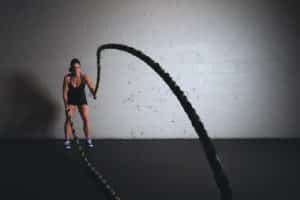

Hypertrophy
Hypertrophy is a fancy word for muscle growth, which is the goal of many people. To increase the size of your muscles, you should be working within the range of 8-12 repetitions while having at least 90 seconds of rest between each set. Still, you shouldn't be resting more than 2min30sec between each set.
By training this way, you are going to get stronger but also heavier.
Maximal Strength
This type of strength is related to your neuromuscular system; it is also known as intramuscular coordination. The higher your maximal strength, the more muscle fibers you can activate at the same time.
It is an essential aspect for any advanced elements, while in weightlifting, it is one of the primary factors determining your 1x rep max.

To train for maximal strength, you should do 3-5 repetitions of an exercise in each set, while working with very high intensities. At the same time, the resting periods between each set have to be around 3 minutes long.
Since this type of training puts a lot of strain on your joints and tendons, you need a good foundation, which you develop through muscular endurance training.
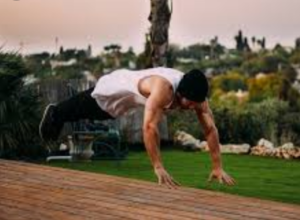
Explosive Strength
For skills such as the muscle-up or any other type of explosive movement, you have to work on explosive strength. The training approach is quite similar to maximal strength, where you do 3-5 repetitions and long breaks (2-4 minutes). The primary difference is that you should choose slightly easier exercises while performing the concentric phase of the movement as fast as possible.
The 4 Essential Models of Training
To work on each of the types of strength, I've created a list of the top 5 training methods that I use on a frequent basis. You are going to find the methods in the calisthenics training plan, which is why you should read through this section.
Circuits
Circuit training is the best form & type of training if you have very little time. It works great in combination with high volumes & lower intensity exercises.
To create a circuit training, you pick 3-5 exercises and do each exercise for 10-30 seconds. Then rest for the same amount of time that it took you to perform the exercise & move to the next exercise.
Keep doing this until you went through all the exercises, then take 1-2min of a break and perform the circuit again.


Step Intervals/Ladders
If you want to increase your muscular endurance, you should integrate ladders/Step interval workouts. Pick 3-5 exercises; then begin with 1x repetition, rest for as long as it took you to do the repetitions. Then move one step up by doing 2x repetitions, rest again and keep going at least until 5x repetitions.
In the workouts below, I recommend you to go up to 6-7 repetitions, though! Once you've reached the point where you can't increase the repetitions by 1x, you start to "moving down the ladder."
If your highest were 7, for example, you would perform only 6x reps in the next set. Rest for as long as it took you to do 6x repetitions and then do 5x and move all the way down until you reach 1x again.
Intervals
Intervals are the easiest way to structure your training & can be used for nearly any type of strength. In the workouts below, you will do 3x sets of 8-12 repetitions (hypertrophy) of each exercise, while the workout usually consists of 3-5 exercises, as this will build muscle quickly.
But you can also do intervals with only 3-5 repetitions and longer breaks (max strenght) to work on explosive or maximum strength.
Supersets
An exciting way to increase your maximum strength while having an element of muscular endurance is to perform supersets.
One superset consists of two exercises, while one is significantly harder than the other one. Then you perform 3-5 repetitions (A) of the first exercise and immediately move to exercise B (without any rest!!!).
Do exercise B for 8-12 repetitions and then rest for 3-4 minutes.
Example:
Exercise A: Ring Dips (3-5)
Exercise B: Push-ups (8-12)
The Calisthenics Training Plan:
Our bodyweight workout plan, has been tested by many people now & has gained popularity! There are three different levels; Beginner, Intermediate & Advanced. Every two weeks the training method will change, both to keep you more excited and to train your body in different ways!
If you have any uncertainties about the given exercises or can't find them on google you should check out my list of bodyweight exercises, where you should find most of the exercises!
All the training methods (Intervals, Ladders, Supersets) are explained above in case you fergot how they work! If there are still any questions remaining you should leave a comment below.
Get Your 10 Week Calisthenics Workout Plan NOW! 100% FREE!
Having any issues with downloading your bodyweight workout plan PDF? Just leave a comment below & we'll fix it as soon as possible!
Training for Advanced Elements
Since Calisthenics is not only about Push-ups, Pull-ups & dips, you should consider working on advanced elements. It is not only a fun way to develop even more strength, but all these elements are very rewarding to learn. Being able to do a handstand or a planche feels nice and is a good indicator of how much you have been learning through calisthenics.
So what elements do exist?
Elements:
- Handstands
Everybody knows what a handstand is, but it is crucial to have the right approach when training handstands.
Since this is not a handstand tutorial, I recommend you guys to watch this video instead.
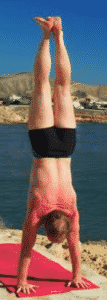
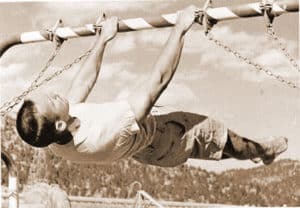
- Backlever
For most people the backlever is slightly easier than the frontlever, but it differs from person to person. The backlever is simlar to the frontlever, but your body is the other way around.

- Planche
The planche is definetly the hardest element out of the ones I've listed, but fortunately, there are a lot of easier variations that you can try!
The video on the side shows you some of the progressions & tips on learning the planche
- Flag
Most people have seen a human flag in videos, but could you imagine doing it yourself? In fact, with enough dedication, you can learn the flag surprisingly fast!

But how do you train these elements?
You've Got Three Options:
Dedicated Routines:
One possibility is to add specialized routines for each element to specific days. This method works best for advanced people that do have the extra time for 2-3 additional workouts.
Integration Into the Workouts
The smartest way is to add exercises that work on advanced elements in your workouts. Just take some of the supplementary exercises of each of the elements and add them to your workout routine.
Example:
Add skin the cat into your pull workouts. Add leaning/pseudo planche push-ups into your push routine.
In our workout you'll find drills & exercises for most advanced elements integrated (except the human flag)
Try Regularly
One of the easiest ways is to attempt the elements regularly. If you want to learn planche, it makes sense to pick 3-4 days every week and try an adequate progression for 3-5 minutes. Be careful to not overdo it as overtraining will happen if you work on advanced elements every day for 30 minutes!!!
Conclusion:
Calisthenics can bring a lot of joy and changes to the way you usually look at working out. Although the first months can be rough, since you won't be able to work too much on advanced elements, it is going to be more and more rewarding.
Integrating balance & functional strength, you won't only see the changes in your body but feel them in everyday life. Improved balance and coordination is definetly a valuable aspect of training calisthenics.
I hope you can find use in the workouts! Even if you decide against these workouts, it is crucial to stick with ONE specific routine for more than a month that you chose!
Switching from different workout plans, or just randomly following what Google & YouTube suggests won't get you very far.
If you manage to follow the program, I'd love to hear your results down in the comment section! Feel free to leave a comment below if you have any questions!
Also, share this article with your friends & find a training partner as he/she will help you to stay motivated for a more extended period!

